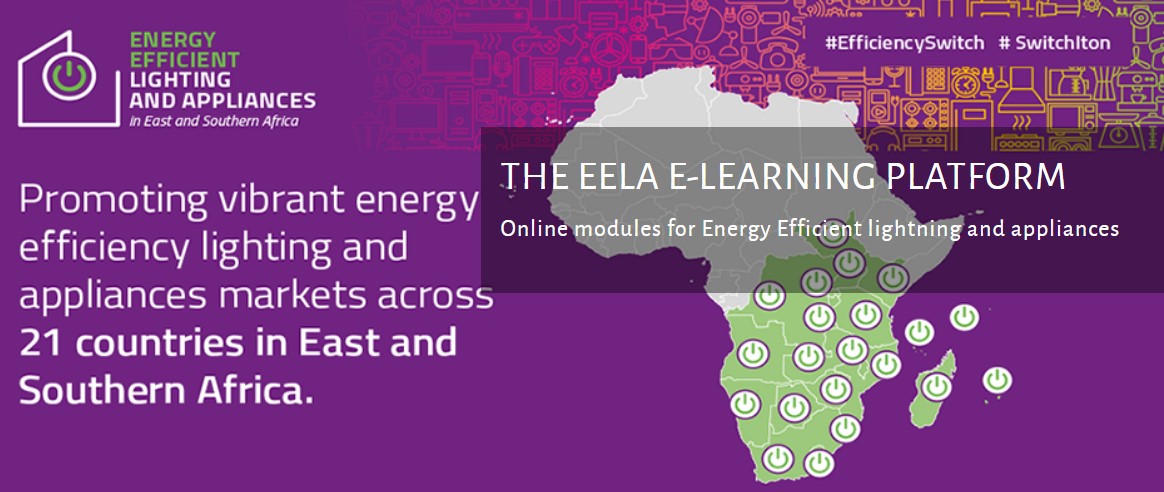WEBINAR: Enhancing Energy Efficiency in East African Municipalities - Module 1
Context
Energy Efficiency (EE) is being widely recognized as one of the most effective ways to achieve CO2 emission reductions as stipulated in the Paris Agreement. Energy efficiency can also contribute to achievement of universal access to affordable clean energy as outlined in Sustainable Development Goal 7 (SDG7). Achievements of SDG target 7.3, namely, doubling improvements on energy efficiency by 2030, requires drastic actions to improve energy efficiencies in all energy load centers, including municipalities. Despite considerable energy efficiency investments, especially in municipalities, significant potential remains largely untapped. Absence of comprehensive and well-designed EE strategies in municipalities and existence of a series of barriers are among the factors hindering investments in EE interventions.
Most of the time, EE projects proposed by municipalities are small in scale which often does not make them attractive to investors and funders, leading to low level or complete non-execution of potential projects. The effective implementation of programs and projects emanating from a well-structured city / municipality EE strategy focused on the various energy sectors of the economy could be greatly facilitated by the project bundling (PB) approach. This approach could on one hand help in scaling up EE interventions by aggregating smaller projects into larger ones while on the other hand help in removing existing obstacles.
Aggregating projects or project elements into a single project or project portfolio in order to achieve economies of scale could be an important contribution to increasing the number of EE initiatives. Components such as administration, bidding, contracting and procurement, project design and deliveries, among others, can be streamlined, thus greatly increasing efficiency and lowering transaction costs. The financial component can similarly be pooled, making the need for funding greater and therefore more attractive to funders. Because of all these benefits that project clustering brings, it can be seen as an effective instrument to promote and enable investments in EE projects and thus expand the implementation of EE projects.
It is against this context that the Copenhagen Centre on Energy Efficiency in collaboration with the East African Centre for Renewable Energy and Efficiency (EACREEE) has organized this virtual training course on Energy Efficiency and Project Bundling for East African Cities/Municipalities..
Objective
The eTraining “Enhancing Energy Efficiency in East African municipalities” is developed by the Copenhagen Center on Energy Efficiency (C2E2) with the objective of sharing knowledge and key learnings to foster energy efficiency actions on a regional, national and local scale. The training will be organised in collaboration with the East African Centre of Excellence for Renewable Energy and Efficiency (EACREEE).
Target audience
Target groups are national and local authorities of the East African countries such as city and municipality majors and their advisors, technical experts and practitioners, as well as energy utilities and other relevant decision makers.
Focus areas
The training will focus on seven main areas:
- Basics about energy efficiency – benefits, opportunities, policies, and projects;
- EE strategic planning for municipalities;
- Public and commercial buildings and existing services;
- Street lighting;
- Water provision;
- Business models and finance;
- Measuring reporting and verification (MRV).
Learning objectives
For the East African region context and the focus areas:
- Describe, understand and discuss the role of energy efficiency;
- Understand the need of EE strategic planning, and how to do it;
- Recognise and apply key steps for the implementation of energy efficiency measures;
- Identify suitable business models;
- Assess financial aspects of each project and pinpoint viable sources of finance;
- Discuss MRV principles, benefits and procedure.
Content outline
The content of the eTraining is based on six modules, where the last module will showcase a few good experiences. The outline is as follows:
MODULE 1 – General introduction to EE: benefits, opportunities
and EE strategic planning
- The potential of EE in the global, regional and the local energy context
(Gabriela Prata) - Energy efficiency policy and measures
(Xianli Zhu) - Energy efficiency strategic planning
Part 1: Steps 1,2,3
(Rahul Raju)
Energy efficiency strategic planning
Part 2: Steps 4,5,6
MODULE 2 – Project Bundling
- Introduction to Project Bundling
(Jorge Rogat)
MODULE 3 – Rapid assessment of EE projects for municipalities
- The status quo and energy efficiency potential actions for of existing services and commercial buildings
(Clara Camarasa) - Energy Efficiency – Building Envelope
(Clara Camarasa) - Energy Management and Audit for buildings
(Rahul Rahu) - Energy Efficiency – HVAC systems (Part 1 & 2)
(Rahul Rahu) - Energy Efficiency – Lighting systems
(Jorge Izquierdo) - Opportunities for EE
(Santiago Santaclara) - Energy efficiency in the water
(Xianli Zhu)
MODULE 4 – Business models and finance
- Business models
(Jorge Hinojosa) - Finance
(Xianli Zhu)
MODULE 5 – Monitoring reporting and verification (MRV)
- Measurement, Reporting and Verification (MRV) systems
(Fernando Farias)
MODULE 6 – Showcasing good experiences






